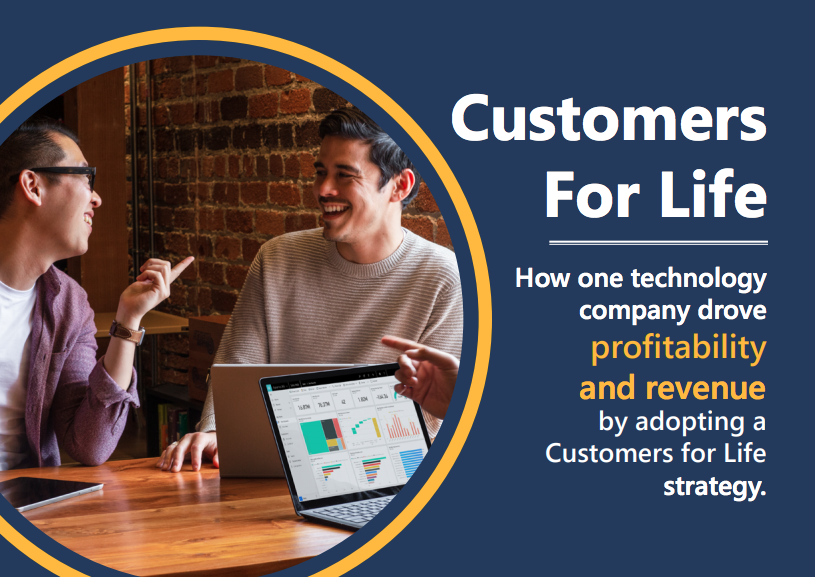
Building Lasting Customer Relationships
For many organizations, relationships with customers is central to business operation. There are so many reasons for companies to prioritize building long-term customer relationships. From a purely financial standpoint, it’s estimated to cost five times more to create a new customer than it costs to retain an existing one. In business-to-business (B-to-B) relationships, customer experience may be becoming more of a deciding factor than price and product themselves. And a positive, ongoing relationship is more fulfilling for both the organization and the customer. People seek meaningful connections, not just random purchases and sporadic service fulfillments. From the customer side, it is more comforting to have a reliable and consistent provider of a need than to start over and re-search every time the need arises. Building ongoing and mutually rewarding relationships is a priority for us at Infused Innovations, and it’s also a goal that Microsoft wants to help businesses foster. Here are some ways to achieve those lasting relationships.
Microsoft’s Customers for Life Model
Microsoft’s business strategy program designed for customer relationship building is called Customers for Life. It emphasizes a “customer first culture” and highlights the importance of value at every stage of customer experience. Great customer service at each stage means anticipating their needs, communicating well, and tailoring experiences to individual customers as much as possible. The Customers for Life Strategy is described in these points:
- Communicate your unique value and focus on your best customers’ needs.
- Retain and engage customers to manage “churn.”
- Make interactions recurring, through subscription products and services.
- “Land and expand” with relevant cross-sell and upsell opportunities.
Creating Ongoing Customer Relationships: Example Guidelines

In Microsoft’s Customers for Life eBook, they outline how a (fictional) example company could benefit from a shift in company thinking to achieve long-term customer relationships. In it, the company team members come up with the following culture guidelines. They can prove useful to any organization working toward similar goals, either adopted themselves or as a springboard for more customized brainstorming about what guidelines would best serve your company.
- Empower every employee to be a “Customer Success Manager.” Everyone on the team, regardless of their position, comes to see customer happiness as a priority for the organization. Each member is given resources and the opportunity to become involved in customer satisfaction, especially if the designated customer service team is overwhelmed or temporarily unavailable.
- Prioritize customer feedback. This is something that Microsoft itself has continually done, and it has led to better products and the satisfaction of customers who get to play an active role in how they are developed.
- Use the customer’s own products and services. When applicable, engage in an exchange in which you also purchase from the customer. This can level out the relationship and create a sense of mutual benefit, showing that you want to support their business as well.
- Treat ongoing customers as well as you would prospective ones. Just like with personal relationships, it’s worth it to continually show customers that you value them, rather than luring them in and then moving your attention elsewhere. Repeat customers should be treated at least as well as you would treat new ones.
- Collaborate with colleagues across departments. To create the most seamless customer service experience, make sure everyone is on the same page and able to coordinate efforts.
Other Tips to Build Strong Customer Relationships

- Really get to know your (best) customers. There are lots of ways to do this. If you’re a small business, nourish interactions similar to ways you would with personal relationships. For more and broader insight on who your customers are and what they want, data analysis can help. Something like a Customer Data Platform can increase your visibility on this. With such views of your customers, you can identify which ones are your most high-propensity and valued customers, and focus on them the most.
- Strive to meet their needs. If you have a genuine desire to fulfill your customers’ needs, they will notice it. Take the time to find out what your best customers are looking for and deliver it.
- Broaden customer service across different media. These days especially, much of customer engagement happens through various forms of social media. But customers still want easy connections through phone, email, and website chat as well. The more options you have, the easier you make it for customers to connect with you and find satisfaction in the ease of that connection.
- Consider loyalty programs. Providing incentives and exclusive offers gives repeat customers reasons to keep coming back. They’re happy to save, and you’re happy to have their continued business.
- Run your business with transparency. Finally, doing open and honest business is attractive to customers. Let them know how you operate and what they can expect, and they will appreciate it.
Curious about other ways to help your organization thrive? Check out our post on diversity and success in the workplace.
